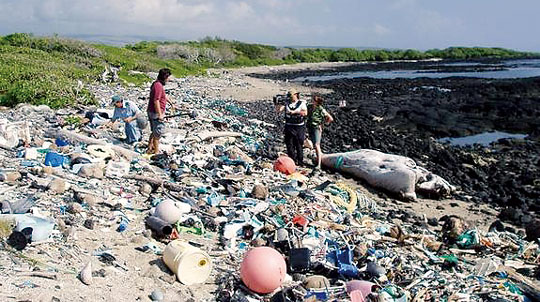Umbrella handles. Pens. Popsicle sticks. Lots and lots of toothbrushes. These are just a few of the items that make up the approximately 13 million sq. km Eastern Garbage Patch, an immense plastic soup in the Pacific Ocean that starts about 800 km off the coast of California and extends westward. Sucked from the coasts of Asia and America by ocean currents, or discarded at sea, plastic debris accumulates there in an ever-growing mass that does not biodegrade and is said to be already larger than the United States.
Scientists have long known that plastic in the garbage patch and elsewhere is stuffing the stomachs of seabirds and causing them to starve, suffocating fish and choking marine turtles.
But what is now becoming clear is that when pieces of plastic meet other pollutants in the ocean, the results can be even more toxic. That's because, as a growing number of studies are showing, the plastic debris absorbs harmful chemicals from the seawater it floats in, acting like a "pollution sponge" that concentrates those chemicals and poses a different, more insidious threat to marine and other life.

















With your current subscription plan you can comment on stories. However, before writing your first comment, please create a display name in the Profile section of your subscriber account page.